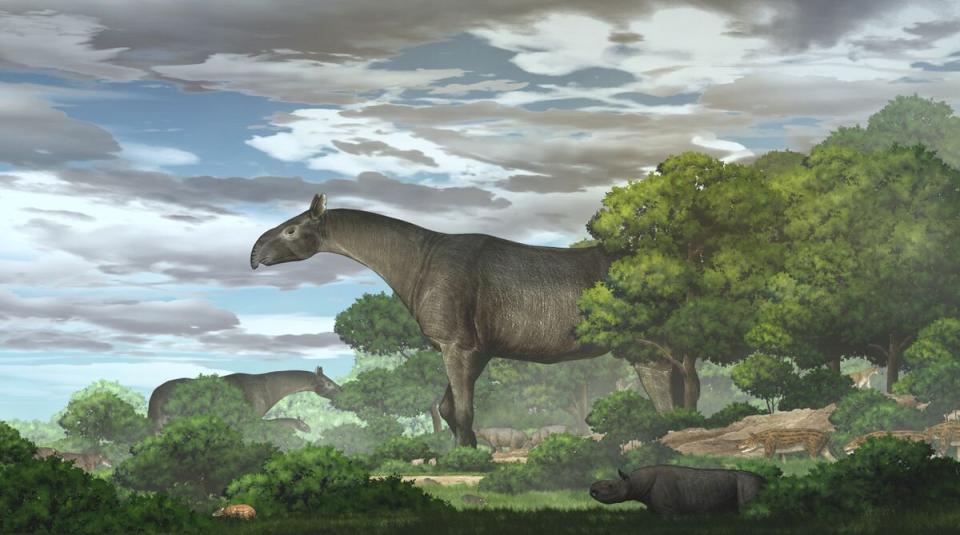Scientists Found an Ancient Fossilized Rhino, and It Could Be the Largest Mammal in History
The world around us continues to evolve ever day, but that doesn't mean ancient findings are no longer exciting. Researchers just found a huge rhinoceros fossil in China, and it now appears to be the biggest mammal discovered in history, clocking in at 26 feet in length, 16 feet in height, and 24 tons in weight. The team published their findings in the journal Communications Biology and explained that this rhino is four times the size of the largest elephant in Africa (which currently reigns as the biggest animal currently on Earth) and lived in Asia 26-and-a-half million years ago.

Courtesy of Chinese Academy of Sciences
Researchers think this fossil, officially named Paraceratherium linxiaense, looks like an oversized tapir, which is an herbivorous mammal that also resembles a pig. The hornless ancient rhino, though, appeared to have a narrow skull, short trunk, and a long, muscular neck. "It had a body weight of 24 tons, similar to the total weight of four African elephant or eight white rhinos," Professor Tao Deng of the Chinese Academy of Sciences, the lead author, told SWNS.
"It was five meters (16.4ft) high at the shoulders and eight meters (26.25ft) long. The giant rhino's long legs were good for running. Its head can reach a height of seven meters (23ft) to browse leaves of tree tops," Deng explained of the rhino. "Its prehensile nose trunk was extremely useful to wrap around branches-allowing the sharp front teeth to strip off the leaves. Its tusk-like incisors are primarily used to break twigs and strip bark, as well as to bend higher branches."
The researchers found this fossil in a prehistoric animal graveyard in Gansu, China. Since it's so rare to find such preserved pieces of animals, this discovery will help the team learn even more about this rhino and its genealogical descendants. "It is one of the largest land mammals that ever lived. The giant rhino has primarily been found in Asia. But its evolutionary relationships remain unclear," Deng shared. "It raises the possibility the giant rhino could have passed through the Tibetan region before it became the elevated plateau it is today. From there, it may have reached the Indian-Pakistani subcontinent in the Oligocene epoch between 34 and 23 millions years ago where other giant rhino specimens have been found."

